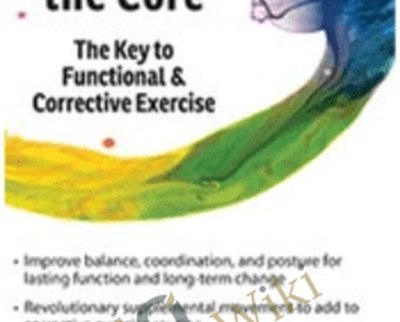Inner Circle -The Science Behind Blood Flow Restriction Training – Mike Reinold
Original price was: $31.00.$13.00Current price is: $13.00.
Inner Circle -The Science Behind Blood Flow Restriction Training – Mike Reinold Download. or most coaches, plyometrics are an enigma. We know that plyometr…
Salepage link: At HERE. Archive: http://archive.is/wip/59MNd
or most coaches, plyometrics are an enigma. We know that plyometrics improve performance, but there is so little information available that we don’t know how plyometrics do what they do. Information on the value plyometrics have specifically for speed development is especially sparse, outside a few studies on acceleration. Even a solid definition of plyometrics is hard to nail down because the handful of experts on the topic use differing terms to label various jumping exercises.
Following is a pragmatic approach to understanding and using jumping exercises. This is real-world guidance learned from some of the biggest legends in sports science and applied coaching. It’s a big topic and will be spread across this and two subsequent articles.
What Are Plyometrics?
Plyometrics exploit the stretch-shortening cycle of the neuromuscular system. They increase the use of elastic energy from tendons and muscle. Sport science is still trying to figure out where the improvements are coming from at the cellular and tissue level, but scientific mysteries aside the results speak for themselves: plyometrics raise jumping and sprinting performances.
Plyometrics improve power through adaptations to the neuromuscular system. But so does running, leaving coaches to weigh the use and inclusion of the plyometric modality.
The body’s center of mass is displaced only a few centimeters up and down vertically and a little over two meters horizontally at top speed. So coaches may question what plyometrics can do to overload the body for better speed performance. Many sports, such as basketball, involve jumping. It doesn’t take a leap of faith to believe that jumps training could improve jumping ability. Moving into space to make a jump, though, typically requires speed, and confusion reigns over how jumps training might enhance speed, especially top-end speed.
How Do Plyometrics Work?
Figure 1: Plyometric Hurdle Hops
Plyometrics generate a rapid stretch in the muscles, and over time the body adapts by increasing the efficiency of the movement and, significantly, by redirecting the forces generated to produce more force in return. Forces can be generated using the ground or, particularly for upper-body training, Olympic bars and medicine balls. Whatever the case, any time rapid forces are involved caution is called for. Rapid stretching is a type of overload that is not as simple as the overload involved in weight training, where the load of the bar or other weight-bearing equipment is clear.
Plyometrics involve dozens of options and derivatives, so progressions and improvements are more difficult to quantify compared with more conventional training modalities. What is clear is that the stretch-shorting cycle of the soft tissues and even bones amid the stress of plyometrics yields favorable improvement in the total amount of force generated in the same or less time than in other types of training.
Many coaches use plyometrics to enable their athletes to deliver more force in less time to each step, thus increasing speed. Reducing ground contact time is a commonly discussed goal. But since actual sprinting is faster than any plyometric option in delivering maximal power, the question must be asked: Why use plyometrics for speed development if they are not as specific as simply sprinting at speed?
Why Use Plyometrics?
Plyometrics are popular for a number of reasons, some shocking and some less so when you see the rationale behind the use of this modality of shock-method jumps training. The following list is not exhaustive, but it does show that jumps training is important for track-and-field and team sport athletes. Here are the most important reasons to use plyometrics.
- Improvements in jumping and speed (functional power enhancement)
- Reductions in noncontact injuries (proprioceptive force control enhancement)
- Improvements in the power-to-weight ratio (nervous system enhancement)
- Increases in running economy (elastic contribution efficiency enhancement )
Many coaches like using bodyweight plyometrics in particular because this typically involves familiar movements, making them convenient and natural. Sprinting, weight training, conditioning, and technique development all also enhance athletic performance, but plyometric jumps training is especially effective for the reasons listed above.
Numerous athletes achieve greatness solely from playing their sport. How much better they might be if they did sport-specific plyometrics is the question on everyone’s minds. Of how much more benefit are prescribed plyometrics over genetics and the haphazard acquisition of jumping and sprinting ability from general exposure to sport?
How Much Do Plyometrics Help?
With all of the options available, from conventional strength and power training with weights and other equipment to sprint and specialized agility training, how much more plyometrics help athletes is a bit of an unknown. World records have been set in sprinting without plyometrics, and greatness has been achieved by players in basketball, for example, who are blessed by genetics and have developed extraordinary jumping and agility abilities in the absence of plyometrics or any form of organized training.
Also important to note is that plyometrics strain connective tissues and expose athletes to injury risk. So the better question is not if plyometrics help but if they are worth investing time and energy in if they risk injury and if the results are not known to be significantly better than playing the target sport and doing assistance work with conventional training modalities.
What Is the Rationale for Using Plyometrics?
Coaches have succeeded with and without plyometrics. The best approach to incorporating plyometrics is to make them generally available and to see how individual athletes respond. Athletes in some sports will not benefit much, but small doses of plyometric training seem to help even endurance athletes, if the plyometrics are integrated carefully into training.
The real-world benefits of plyometrics are as follows:
- They can be specific enough to overload specific joints
- They can be alternatives to specific movements for injured athletes
- They teaching landing and other movement skills
- They are a great option in limited space or poor weather
Clearly, a practical need exists for doing plyometrics. Not every athlete is born with the legs of an Usain Bolt, lives in a warm region of the world, or can train daily on such soft surfaces as grass; not even the most seemingly perfect training program can avoid injuring an athlete; and not all skills can be acquired simply by watching videos of proficient athletes. There is a need for the hands-on practice of varying movements and for having on hand training alternatives to stave off staleness and offer options for injured athletes.
How Are Plyometrics Applied in Training Programs?
The next two articles will cover the two very big topics of training and coaching plyometrics. Training is about loading, while coaching is about teaching. Coaches are responsible for training and are on hand to ensure that what is planned for training is effectively applied. The term applied sport science is really just sound coaching based on the right education.
The next two articles, therefore, are the meat of this series. On the training side, they will cover how to assess, prescribe exercises and appropriate workouts for, and of course monitor an athlete for the effects of the training. On the coaching side, they will go over instruction by construction, meaning the best ways to get athletes to progress without excessive or inappropriate verbal instruction.
Please share this article so others may benefit.
Here's an overview of the prominent keywords and a list of famous authors:
Business and Sales: Explore business strategies, sales skills, entrepreneurship, and brand-building from authors like Joe Wicks, Jillian Michaels, and Tony Horton.
Sports and Fitness: Enhance athleticism, improve health and fitness with guidance from experts like Shaun T, Kayla Itsines, and Yoga with Adriene.
Personal Development: Develop communication skills, time management, creative thinking, and enhance self-awareness from authors like Gretchen Rubin, Simon Sinek, and Marie Kondo.
Technology and Coding: Learn about artificial intelligence, data analytics, programming, and blockchain technology from thought leaders like Neil deGrasse Tyson, Amy Cuddy, and Malcolm Gladwell.
Lifestyle and Wellness: Discover courses on holistic health, yoga, and healthy living from authors like Elizabeth Gilbert, Bill Nye, and Tracy Anderson.
Art and Creativity: Explore the world of art, creativity, and painting with guidance from renowned artists like Bob Ross and others.
All the courses on WSOlib are led by top authors and experts in their respective fields. Rest assured that the knowledge and skills you acquire are reliable and highly applicable.
Specification: Inner Circle -The Science Behind Blood Flow Restriction Training – Mike Reinold
|
User Reviews
Only logged in customers who have purchased this product may leave a review.

Original price was: $31.00.$13.00Current price is: $13.00.










![[ETA] Energetic Throat [Chakra] Activation - Rudy Hunter](https://wsolib.com/wp-content/uploads/2023/05/Rudy-Hunter-5BETA5D-Energetic-Throat-5BChakra5D-Activation.jpg)

There are no reviews yet.